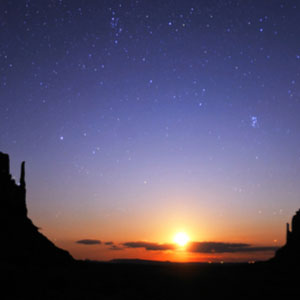
As a Native American, I was raised that everything in Creation has SPIRIT. The plants, the water, the wind, the rocks, and the mountains all have Spirit. The Sky Worlds, the moon, the stars. and the planets all have Spirit. All of these are part of our Natural World. However, the moon holds significance to Native Americans. We believe that the moon is feminine, and we refer to her as “Grandmother Moon.” Moontime is just one of many traditions we have that involve Her.
Grandmother Moon
Grandmother Moon watches over the waters of Earth. For example, she regulates the tides in the oceans. Much of water life spawns according to the cycles of the moon. Native Americans, believe that women watch over all of the waters of Earth. Water brings forth new life, just as females usher in new life. Because of these beliefs, Grandmother Moon is especially close to women, as she governs the female's natural cleansing cycle of menstruation, which Native Americans refer to as Moontime.
Moontime Ritual
One of the Native Americans' greatest moon rituals centers around Moontime. Moontime is a special gift given only to women. This is a time for a female to cleanse herself mentally, physically, emotionally, and spiritually. This is considered a time of power, as women have the ability of the Great Spirit and bring forth life.
A woman usually uses this time to consult Grandmother Moon regarding problems in her life. She would ask for strength, wisdom, courage, help to raise her children, to even problems with her mother-in-law. Grandmother Moon would help females with healing and balancing their energy. My own mother taught my sisters and me that when we experienced our Moontime that we were closer to the Great Spirit and trust me, with all the females we had in our home, someone was always on her Moontime.
During Moontime, I like every other female that I knew was not expected to cook, clean, tend to children, or prepare medicine, however, we could not use the pipes or any other sacred item. Basically, females used Moontime for us to relax and take it easy. All of our chores were done by the other family members.
Women traditionally used this time for reflection and to ask for guidance for other family members, loved ones, or anyone that they knew of that needed help. I used this time to torment my sisters for all the work that they threw on me during their little “break”. Think, 8 girls in one family, I had a lot of payback to dish out.
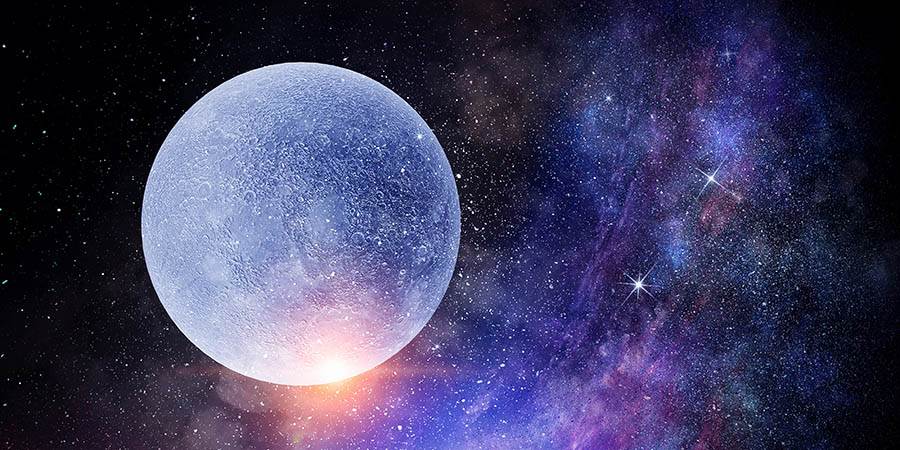
A Native American Seasonal Full Moon Guide
Native Americans traditionally had different names for each full moon. Additionally, a name for the lunar month might vary each year or between the different tribes and depending on which part of the country the tribe or the band resided.
Some of the names I've listed here may reflect usage at one time or another in history but possibly they are no longer used by any designated group today. However, these are the names that I was taught and that I associate with each full moon. Many of the names are interpreted into English and are not necessarily identical on the Grecian calendar.
January Full Moon – Wolf Moon
The January Full Wolf Moon represents howling wolves that would cry due to hunger, or so we thought. We now know that wolves howl to define their territory.
February Full Moon – Snow Moon
February’s Full Moon is traditionally called the Snow Moon as February is typically a time of heavy snowfall. Sometimes the explanation for the name is just that straightforward.
March Full Moon – Worm Moon
The March Full Moon is known as the Worm Moon. March is traditionally the time that worms start to come alive underground as they start warming the soil preparing it for Spring.
April Full Moon – Pink Moon (or Breaking Ice Moon)
April’s Full Moon is referred to as the Pink Moon. The pink moon symbolizes one of the first spring wildflowers. The April Full Moon would also be known as the Breaking Ice Full Moon as this is when the weather would warm, snow would melt, and the rivers and lakes would no longer freeze.
May Full Moon – Flower Moon (or Planting Moon)
The May Ful Moon goes by two names, either the Flower Moon or the Planting Moon. This name refers to the time of year when all the flowers would be very abundant. It is also traditionally the time that we would start planting our crops to prepare for the upcoming fall harvest.
June Full Moon – Strawberry Moon
Quite simply, the June Full Moon is typically referenced as a Strawberry Full Moon in reference to the seasonal ripening and gathering of strawberries.
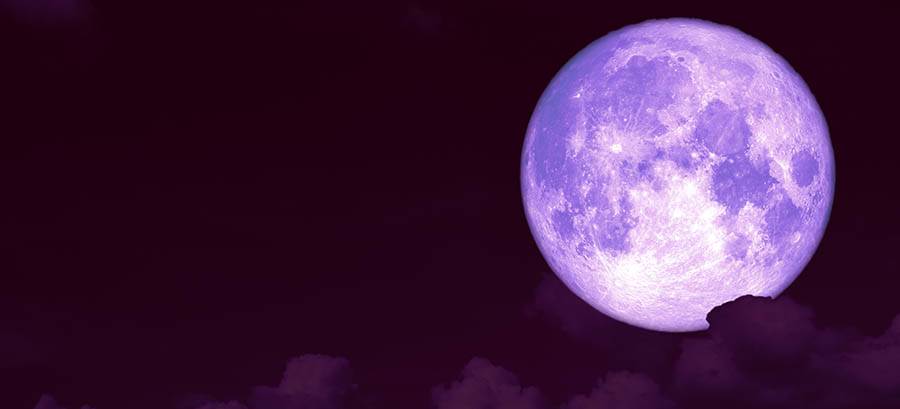
July Full Moon – Buck Moon (or Corn Moon)
July’s Buck Full Moon refers to when the male deer (better known as bucks) have antlers in full growth mode. ff dears also known as a buck when their antlers are in full growth mode. In addition to being known as the Buck Moon, the July Full Moon is also known as the Corn Moon because this is traditionally the month corn crops are planted.
August Full Moon – Sturgeon Moon (or Fish Moon)
The August Full Moon is typically called the Sturgeon Full Moon, or the Fish Moon. This name is in reference to the abundance of fish found in the lakes and streams. August is the month when we would catch the bulk of the fish that we would use for the remainder of the year.
September Full Moon – Harvest Moon (or Autumn Moon)
The September Full Moon has always been referenced as the Harvest Moon. This full moon corresponds with the time of harvesting corn and other crops from the field. Sometimes the September moon would also be known as the Autumn Moon. As autumn arrived, this is when the leaves would start turning colors and the nights would grow colder. The September Full Moon alerted us that Winter is coming, very quickly.
October Full Moon – Hunter’s Moon
The October Full Moon is referenced as the Hunter's Full moon. It was during this time of year the men would start to hunt for game and store it for the long Winter months ahead.
November Full Moon – Beaver Moon (or Dear Rutting Moon)
November’s Full Moon is referenced by two different names. The Full Beaver Moon is when beavers finished up their preparations for Winter and they retreated into their logs. Native Americans would also reference the November Full Moon as the Dear Rutting Moon. During this time of year, male deer (bucks) are in rut, and they tend to scratch their powerful antlers against the trees.
December Full Moon – Cold Moon (or Long Night Moon)
Finally, the December Full Moon is known as the Cold Moon. Pretty obvious why right? In December, the cold grip of Winter would wrap its fingers around all of us as the nights became long and dark, and extremely cold. Sometimes the December Full Moon would also be known as the Long Night Moon in reference to the long nights of Winter the days were much shorter and much colder.
Of course, when it comes to the moon, there is much more than just the seasonal full moons to explore every month, each moon cycle holds its own importance for different reasons.
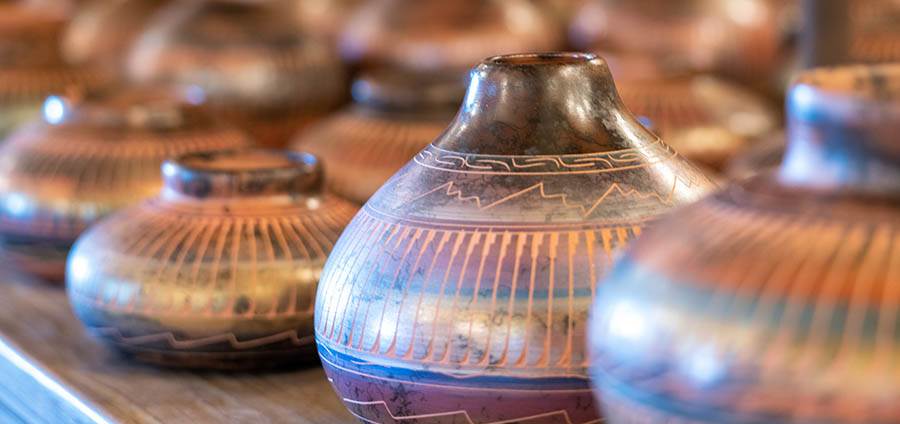
A Traditional Native American Full Moon Ritual
Now onto the good stuff... During a full moon, women would ask Grandmother Moon for special favors, certain energy clearings, and assistance with clearing out negative energy as well. During the 3 days of the full moon, we would conduct a special full moon ritual involving this female (this was always me from the age of 12 and many years beyond). I was taught this ritual by my grandmother, and it was passed down from generation to generation to all the females in my family, including babies, toddlers, grouchy teenagers, adult females, and our elder females.
We would all sit in a circle (circles are very important to Native American culture). I would sit in the center of the circle. I would be handed a large pitcher full of water and a special handmade, wooden bowl that had been in my family for 100 hundred years. We would sing ancient prayers and songs asking for Grandmother Moon to bless the earth and all her waters. There were beating drums and tobacco was placed in the scared pipe and smoked among the adult females. Asking for the blessing of water was again, very important as females are responsible for all Earth's water. I would take the pitcher of water and pour it into the ancient wooden bowl and this water would become my medicine water to be used during the month.
Today, I am teaching a new generation this ancient moon ritual with my granddaughters. We use this as our special time and the girls enjoy the ceremony and are embracing the special meaning behind it. I hope that you also try this moon ritual, and it is my hope that it also brings you the good fortune it has brought to my family.
Lunar Planting Moon Ritual
There are also several different aspects to the full moon or Moontime ritual that my culture also embraces. To this day, my family still farms and cultivates many fruits and vegetables. We practice a method of farming called lunar planting.
So how does lunar planting work you ask? Grandmother moon has four moon phases that last seven days per phase. During the full moon, the moisture content in the soil is at its highest.
Native Americans pay close attention to the cycles of Grandmother moon. Seeds planted during a full moon always produced a higher yield as opposed to seeds planted during other cycles of Grandmother moon. Before any planting takes place, the members of my tribe would perform a smudging prayer and blessing and ask for the cleansing of the earth for the new crops.
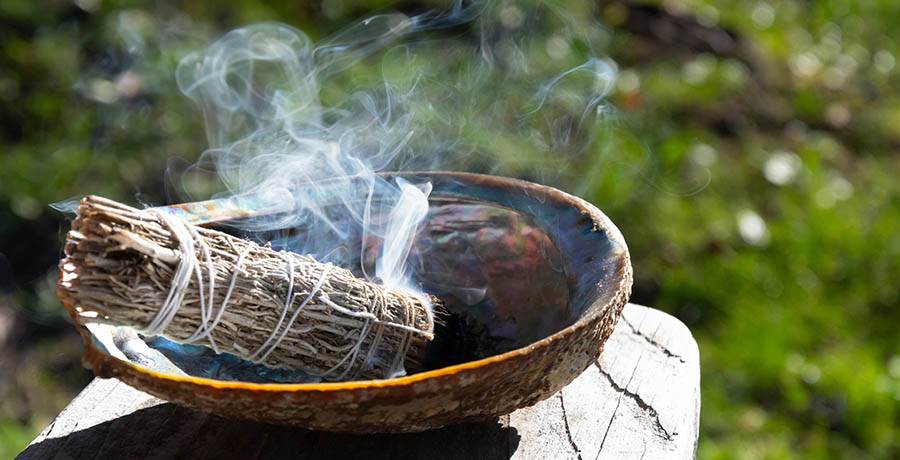
Smudging Moon Ritual
Smudging is a ritual that links smoke with spirituality in many remarkable ways. During the ceremony ritual, we would call upon Grandmother Moon and ask her to purify, cleanse, and rid the earth of negative energies. We would also ask her to bless our crops with a bountiful harvest and preparation for the winter months ahead.
For the smudging ceremony, we would use herbs to conduct the smudging ritual. The most common herb that we would use would be tobacco. Tobacco is highly sacred medicine, and I was taught to believe that it would bridge the worlds between humanity and the Spiritual world.
For this ceremony, we would place dry tobacco leaves in a bowl and use wooden matches and a very large feather to wave the smoke. If a large feather wasn't available, we would also use our hands. Two people would wave the smoke. All of the females in our band would gather outside in a circle on the land that would be used for planting. The elder females would hold the bowl with the smoking tobacco in it and would wave the feather over the smoke for the winds to take the smoke and blow it across the earth. We would then all recite together a sacred blessing to Grandmother Moon.
“Grandmother Moon, may you cleanse our hands as they are used to create beautiful things.
May you blend our feet as they take us to where we need to be.
May you cleanse our hearts so that you hear their messages clearly.
May you cleanse our throats so that we may speak wisely.
May you bless our eyes so that we can see the wonder of the world.
Grandmother Moon, may you carry this smoke across our world, to the spiritual world, and to the great spirit Beyond.”
After the tobacco burned completely out and cooled at this time the youngest females would take the ashes and bury them in the soil that we would be used for planting all the crops.
I hope this look at traditional native American Moon Rituals and the Full Moon origins has inspired you to perhaps try some of these moon rituals on your own. Or perhaps, start your own traditions within your family too during the next full moon!
Peace, Love, and Light
Ursula x9927
 Get a Reading with Ursula x9927
Get a Reading with Ursula x9927
Ursula is a natural born psychic medium. Ursula’s name comes from her Shawnee name which means Little Bear. She is a proud member of the Eastern band of Cherokee and holds an MA in metaphysical studies from Ami. Ursula uses her gifts and education to provide high level psychic medium readings and specializes in matters of the heart, twin flame connections and communication with loved ones that have departed to the after life.
